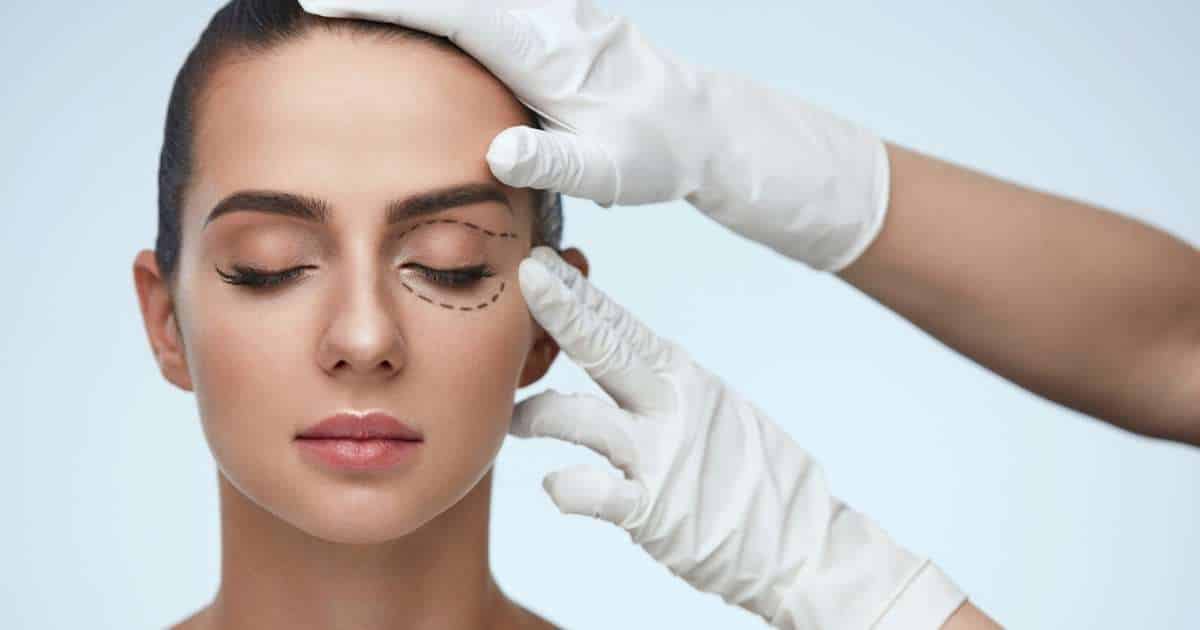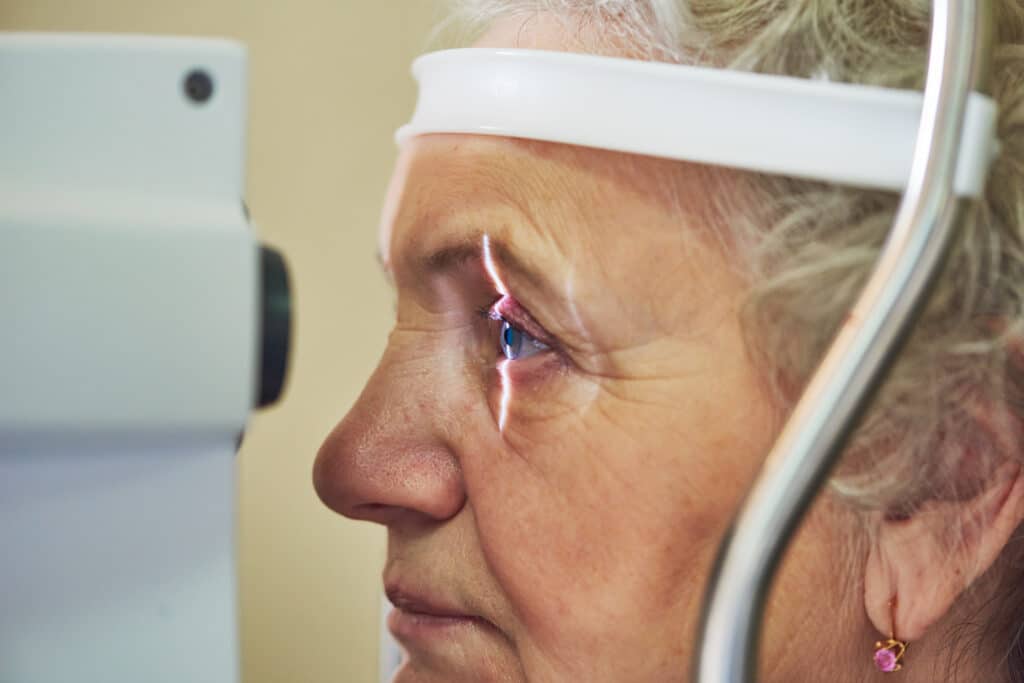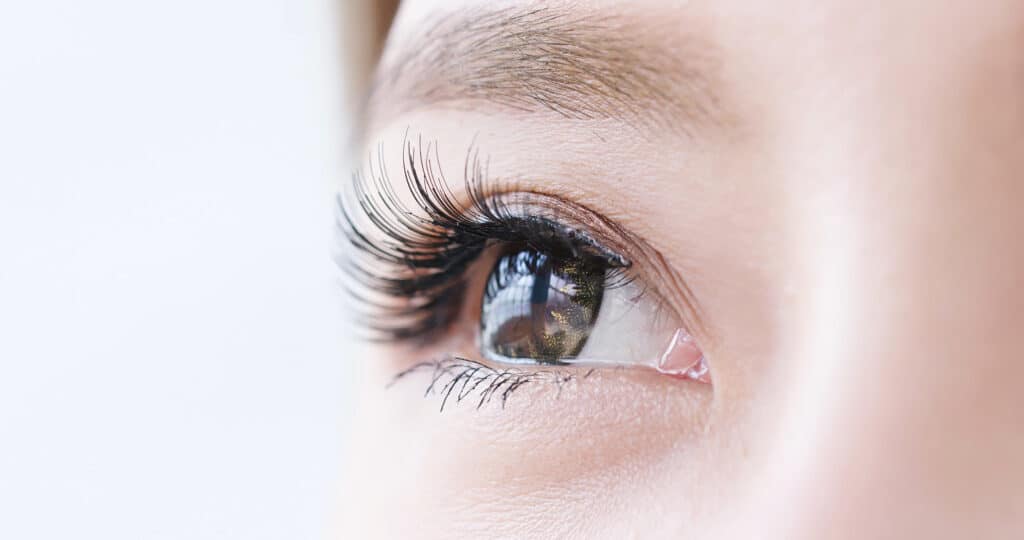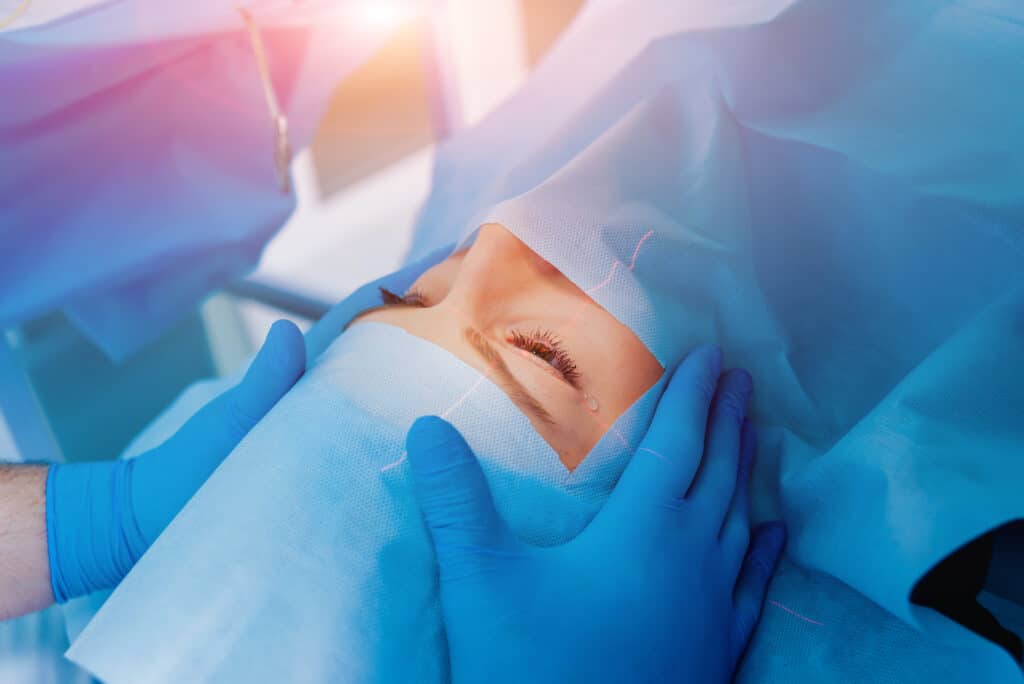Understanding Blepharoplasty Eyelid Surgery
January 14, 2021
What Is a Blepharoplasty?
A blepharoplasty (or eye lift) is a surgical repair or reconstruction of an eyelid. This procedure is used to correct deformities, disfigurations, and defects of the eyelids. It is also commonly used as a cosmetic procedure to help patients reverse some signs of aging that have developed over time around their eyes. Blepharoplasty eyelid surgery can help to remove excess skin, tighten muscles, and remove or reposition excess fat around the eyelids for aesthetic improvements. Specific conditions that blepharoplasty may be used to correct include:
- Loose, saggy, droopy, or excess skin on the upper and lower eyelids
- Bags under the eyes
- Appearance of puffy eyelids caused by fat prolapse
- Impaired peripheral vision caused by the eyelid not following its natural contour
While these physical developments involving the eyelid skin can be addressed by blepharoplasty eyelid surgery, many patients view the procedure as a way to simply achieve a more youthful appearance. Blepharoplasty can rejuvenate the eyes by tightening the skin and smoothing out fine wrinkles. In many cases, blepharoplasty can be incorporated with other cosmetic procedures such as face or brow lifts or skin resurfacing to achieve a more comprehensive approach to combat facial aging.

Who Is a Good Candidate for Blepharoplasty?
The decision to undergo a blepharoplasty eyelid surgery is one to be made between the patient and their doctor(s). For this procedure, it is typical for patients to meet with an ophthalmologist and a plastic surgeon, or a plastic surgeon who specializes in eye surgery. By meeting in person for an examination, the doctor should be able to determine if blepharoplasty is a viable option to address the patient’s condition.
The demographic for patients pursuing this procedure is generally those who are over the age of 35. Good candidates for blepharoplasty are generally in good health overall and free of conditions such as diabetes that may interfere with the healing process. It is also important that those considering the procedure be free of significant eye problems and have clear and realistic expectations of the results they want to achieve with the eyelid surgery.
Preparing for Eyelid Surgery
Once a patient has had an initial consultation with their surgeon to discuss their goals and to determine they are indeed a good candidate for eyelid surgery, they will need to undergo a series of tests in preparation for the procedure. This will usually include a physical examination that includes eyelid measurements, a vision examination that incorporates a peripheral vision assessment, and eyelid photography to help with surgical planning. This up-front documentation of the patient’s condition is necessary both for the preparation of the procedure and for supporting insurance claims on behalf of the patient.
The surgeon should be aware of any prescription drugs or other medical treatments that the patient is currently taking, and they will usually be asked to stop smoking or taking any medicine that increases bleeding risks such as warfarin, aspirin, ibuprofen, and others. The supplement Arnica may be taken before surgery and during the healing process to reduce post-op swelling. Adding pineapple to the diet during the perioperative period can also help to reduce bruising and swelling after surgery due to the bromelain contained in pineapples. The patient will also need to arrange to have someone drive them home after the procedure as they will be coming out of sedation and their vision may be temporarily compromised.
What to Expect During Eyelid Surgery
Blepharoplasty eyelid surgery is an outpatient procedure, allowing patients to return home on the same day that it is performed. Before beginning, the eyelids will be numbed with local anesthesia, and the patient will be given a sedative (usually in pill form) to ensure a painless and comfortable process.
Once sedated and under anesthesia, the doctor will typically begin working on the upper eyelids first (if both upper and lower eyelids need to be addressed) and will make an incision along the fold of the eyelid or eyelid crease in order to remove or redistribute the fat, muscle, and skin as needed before closing the incision(s) with removable sutures.
Moving on to the lower eyelid, the primary incision point is within the natural crease directly below the lashes, and a similar redistribution and removal of tissues is conducted. For some instances, an incision can be applied inside of the lower eyelid to remove or redistribute fat tissue. The benefit to this is that the cut will not be outwardly visible. Depending on the technique that is applied on the lower lids, stitches may not be required.
For both the upper and lower eyelids, the doctor will always attempt to make incisions at points that will naturally conceal scars within the surrounding structure of the eye. This will ensure that the blepharoplasty eyelid surgery’s end result will be the focal point, free of the distraction of visible scarring. In total, a blepharoplasty eyelid surgery involving both upper and lower eyelids may take around two hours to complete.
The Path to Clearer Vision Starts Here
Blepharoplasty Recovery
Once the eyelid surgery has finished there will likely be some temporary adverse effects that the patient may experience. These will subside as the patient recuperates at home, but common issues include:
- Sensitivity to bright light
- Double or blurred vision
- Numb or puffy eyelids
- “Black eye” type of bruising and swelling
- General pain or discomfort
Immediately following eyelid surgery, the patient will spend time in a low-light recovery room within the clinic as their anesthesia and sedatives wear off. The medical staff will also use this time to monitor the patient and ensure that there are no complications that may need to be addressed. Ointment is often used in the eyes to keep them moist after surgery, which can result in blurry vision for the patient. Cold compresses are provided to help reduce initial swelling following the procedure.
The doctor will provide comprehensive post-operative instructions for the patient’s at-home recovery care, which will likely include a continuation of the application of ointment and cold compresses with ice packs. Patients will also be prescribed medication to reduce the risk of infection, reduce pain, or assist with the healing process. It is very common for patients to experience swelling and bruising around the eye after the surgery, however, this should subside within a few days with the proper care.
In the first few weeks after surgery, it is generally recommended to avoid excessive screen time as this can lead to dry eyes. Strenuous activities, applying makeup, smoking, and other activities that may impact the healing process should also be avoided for at least the first two weeks after blepharoplasty. In general, patients should diligently follow their self-care instructions, get sufficient rest, and keep their eyes out of harm’s way while they heal.
Full recovery time for a blepharoplasty eyelid surgery is highly variable and dependent on the patient, their age, and the amount of work done during the procedure. On average, most patients are able to resume their regular activities and be mostly healed after two weeks. The patient’s bruising and swelling should have mostly subsided by that time. Keep in mind, it is not out of the ordinary for patients to need more time for a full recovery. It should also be noted that it may take several months for the scars from surgical cuts to fade.
How Long Does a Blepharoplasty Last?
Patients who undergo a blepharoplasty eyelid surgery should enjoy a more youthful, brighter, and rested appearance with reduced presence of wrinkles and sagging skin for years to come. For many, the self-confidence that comes along with the rejuvenated look is a significant bonus of the surgery.
Final outcomes may vary depending on patient and surgery variables, but blepharoplasty may not have a permanent effect as the skin around the eyes will continue to age and change over time. The effectiveness of the surgery will be significantly influenced by the skin elasticity of the patient, which is why results tend to be longer-lasting for younger patients. In general, a patient can expect the aesthetic effects of upper eyelid surgery to last for five to ten years. In most cases, it is rare to need to repeat a lower eyelid surgery.
If sagging of the eyelids occurs again, it may be more beneficial to pursue different procedures (such as a forehead lift) or simply some light retouching instead of undergoing an additional eye lift procedure. It is important to note that eyelid surgery alone may produce somewhat subtle results, making the patient’s eyes look more alert, youthful, and refreshed. For more transformational shifts in appearance, it is likely that the blepharoplasty would need to be paired with additional procedures.

Potential Risks and Complications of Blepharoplasty
As with any surgery, there is an inherent risk involved. However, it is rare for an eye lift to result in complications and adverse outcomes. Some potential risks that can be associated with blepharoplasty eye surgery include:
- Bleeding, bruising, and infection
- Dryness of the eye
- Blurry vision
- Scarring
- Muscle damage
- Abnormal coloring of the eyelids
- Abnormal folding of the eyelid skin
- Difficulty closing the eye
- Temporary droop of the lower eyelid
- Itchiness around the eye
- Loss of vision (rare)
- Blood clots (rare)
Serious complications associated with blepharoplasty are quite rare, however, it is important for the patient to understand the potential risks and discuss them with their doctor prior to the surgery taking place.
How Much Does a Blepharoplasty Cost?
According to 2019 statistics from the American Society of Plastic Surgeons, the average cost of cosmetic eyelid surgery is $3,282. However, this does not include additional price variables such as operating room facilities, anesthesia, or other expenses. Prices will also vary depending on the surgeon’s level of expertise, the office’s geographic location, and whether or not the blepharoplasty is combined with other treatments such as a brow lift. Given the need for precision and experience with eyelid surgery, it is highly recommended that patients find a well-qualified doctor who has a proven track record of excellent results.
Does Insurance Cover Blepharoplasty?
In many cases, insurance companies will pay for the cost of upper eyelid surgery. For this to occur, there must be clear documentation from the ophthalmologist or oculoplastic surgeon that there is a medical necessity for the procedure. If the patient’s upper eyelid skin is drooping enough to notably obstruct their field of vision or if the surgery is to eliminate redundant skin covering the eyelashes, there may be viable medical reasons for a blepharoplasty. It is best for the patient to reach out to their health insurance provider to determine if coverage may be available if the blepharoplasty is recommended for medical reasons.
If a patient wants to remove excess skin via a blepharoplasty eyelid surgery strictly for cosmetic reasons, it is unlikely that any costs would be covered by the insurance provider. In either case, the patient should work with their medical team and insurance provider to get clarity on the total costs before the eyelid surgery takes place.
Since lower eyelid surgeries are almost always cosmetic, it is highly rare for those costs to be covered by insurance. If insurance is not available for a patient’s eyelid surgery, they may be able to receive patient financing from the surgeon’s office to cover the cost of the procedure in smaller increments over time rather than one lump sum.
Conclusion
Whether you are looking to improve your appearance, address facial aging, or address obstructions to your field of vision, blepharoplasty eyelid surgery may be a good option for you. The removal of excess skin and adjustments on the tissues around the eyelids can have a noticeable impact on one’s youthful appearance, self-confidence, or ability to see clearly. To find out if you are a good candidate for eyelid surgery, it is important to have an in-person consultation and physical examination to determine if a blepharoplasty is the best procedure for your condition. Our Aesthetics team at Heart of Texas Eye Institute is ready to assist with providing advice, diagnosis, or treatment through a blepharoplasty eyelid surgery. We can also recommend alternative treatment options, and in some cases surgery may not be needed at all. Please set up a free consultation with us today to see how we can help improve your appearance or visual field through blepharoplasty.


